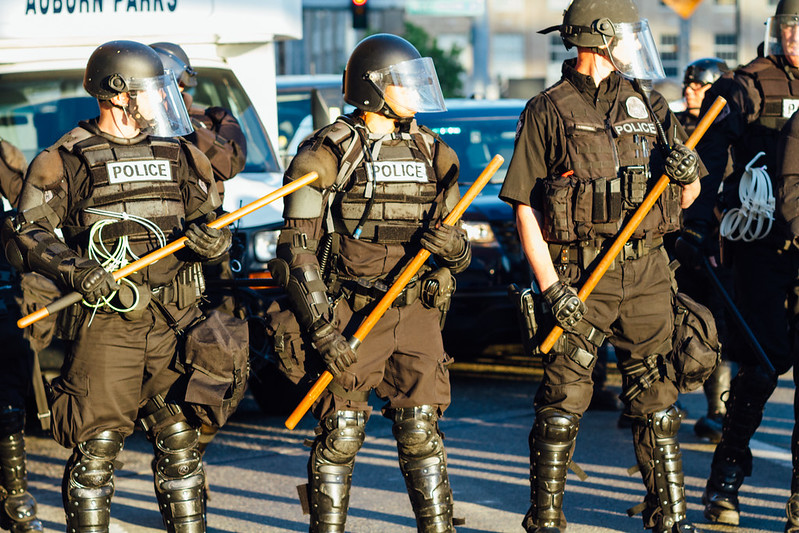
Contents
- 1 Where Freedom Is Strangled And Human Rights Crushed
- 2 Introduction: The Subtle Creep of Control
- 3 Understanding the Beast: What Is Totalitarian Authoritarianism?
- 4 The Warning Signs of Authoritarian Drift
- 5 The Psychology of Sleepwalking Into Control
- 6 Digital Authoritarianism: The 21st Century Upgrade
- 7 Case Study: China’s Social Credit System
- 8 Predictive Policing and AI Surveillance
- 9 Are Democracies Safe? Think Again.
- 10 What History Teaches Us
- 11 What Can Be Done?
- 12 The Cost of Doing Nothing
- 13 Frequently Asked Questions (FAQs)
- 14 Final Thoughts: A Choice Before Us
- 15 Related Articles
Where Freedom Is Strangled And Human Rights Crushed
Introduction: The Subtle Creep of Control
The decline of freedom doesn’t usually happen with jackboots and marching bands. More often, it comes wrapped in the language of safety, security, and progress. Citizens trade liberty for convenience; governments expand powers under the guise of protection; corporations profit by selling both technology and obedience.
So here’s the uncomfortable question: is the world quietly sleepwalking into a new era of totalitarian authoritarianism—an era where freedom is strangled and human rights are systematically crushed?
The evidence, both historical and modern, suggests the answer may be yes.
Understanding the Beast: What Is Totalitarian Authoritarianism?
Before diving in, let’s clear up terms.
- Authoritarianism: Concentrated political power, limited civil liberties, but not necessarily total control over everyday life. Think military juntas, dictatorships, or one-party states.
- Totalitarianism: The extreme version. The state doesn’t just control politics; it seeks to dominate all aspects of society—economy, media, culture, even private thought. Nazi Germany, Stalinist Russia, and Maoist China are historical examples.
The modern twist? Today’s authoritarianism is often digital, data-driven, and corporate-backed—a system of invisible chains rather than iron bars.
The Warning Signs of Authoritarian Drift
1. Mass Surveillance as the New Normal
From CCTV cameras on every corner to smartphones that log location data 24/7, we’re already living in a surveillance society. What was once shocking is now routine.
Case Study: East Germany’s Stasi
In the 1970s and 1980s, East Germany’s secret police employed one informant for every 60 citizens. Today, surveillance is far more efficient—algorithms and AI replace human spies, and we volunteer much of the information ourselves.
2. Censorship in the Age of Social Media
Censorship used to mean banning books or shutting down newspapers. Today, it’s shadow-banning, demonetization, or “content moderation.” Big Tech platforms now act as gatekeepers of speech—often under government pressure.
Example: During global crises, posts questioning official narratives are quickly labeled as “misinformation,” regardless of nuance.
3. Weaponization of Fear
Authoritarian leaders know a frightened public is a compliant public. Pandemics, terrorism, climate emergencies—real problems, yes, but also convenient excuses to expand state power.
Case Study: Nazi Germany
Hitler exploited economic depression and national humiliation to consolidate power. The Reichstag Fire of 1933 became the pretext for sweeping “emergency” powers that never expired. Sound familiar?
4. Weakening of Independent Institutions
Authoritarianism flourishes when courts, media, and universities lose independence. Once watchdogs become lapdogs, there are few barriers left to abuse of power.
Modern Example: Hungary under Viktor Orbán
Critics accuse Orbán of “democratic backsliding”—stacking courts, capturing media, and rewriting laws to keep power consolidated under his ruling party.
The Psychology of Sleepwalking Into Control
Why do people allow freedoms to erode?
- Normalization: Each new restriction feels “small” compared to the last.
- Apathy: As long as personal comfort isn’t disrupted, people look away.
- Distraction: Entertainment and consumerism keep citizens busy.
- Division: Societies fractured along political, cultural, or economic lines fail to unite against creeping authoritarianism.
As historian Hannah Arendt noted, authoritarian systems thrive not only on fear—but also on indifference.
Digital Authoritarianism: The 21st Century Upgrade
Unlike the dictatorships of the past, today’s authoritarian regimes don’t always need tanks in the streets. Data is the new weapon of control.
Case Study: China’s Social Credit System
China is rolling out a nationwide program that tracks financial behavior, social interactions, and even political opinions. Citizens with low “social scores” may face travel bans, restricted internet access, or loss of job opportunities.
This is authoritarianism with a smile—control enforced not by prison camps, but by access to modern life itself.
Predictive Policing and AI Surveillance
Western democracies are not immune. Predictive policing algorithms already flag “high-risk individuals,” often reinforcing racial and social biases. AI-powered facial recognition can identify and track citizens across entire cities.
Authoritarianism 2.0 is frictionless, quiet, and automated.
Are Democracies Safe? Think Again.
Democracies are vulnerable to “soft authoritarianism”—where rights exist on paper but are difficult to exercise in practice.
- United States: The Patriot Act, passed after 9/11, vastly expanded surveillance powers. Many provisions remain today.
- United Kingdom: The Investigatory Powers Act (nicknamed the “Snoopers’ Charter”) gave sweeping powers to monitor communications.
- India: Internet shutdowns have become a common tool to stifle dissent.
Freedom House, a nonprofit that tracks global democracy, reports that 2024 marked the 18th consecutive year of declining freedom worldwide. The democratic backsliding isn’t hypothetical—it’s measurable.
What History Teaches Us

Nazi Germany (1933–1945)
Emergency powers, propaganda, and scapegoating minorities created one of history’s darkest totalitarian regimes. Lesson: never ignore the early warning signs.
Soviet Union (1922–1991)
Centralized control, secret police, and suppression of dissent created decades of fear and stagnation. Lesson: totalitarianism breeds conformity, not creativity.
Maoist China (1949–1976)
The Cultural Revolution destroyed intellectual freedom and enforced ideological purity. Lesson: when thought itself becomes criminal, society collapses.
Modern Parallels
While not identical, today’s trends—mass surveillance, erosion of privacy, politicized media—echo the same pathways. History doesn’t repeat exactly, but it does rhyme.
What Can Be Done?
1. Protect Privacy
Use encryption, support privacy-focused technologies, and limit personal data sharing. Every data point surrendered is a piece of freedom lost.
2. Support Independent Media
Authoritarianism thrives when information is controlled. Independent journalism is democracy’s immune system.
3. Demand Accountability
Question emergency powers, resist normalization of surveillance, and hold leaders to account.
4. Rebuild Communities
Authoritarianism isolates people. Strong local communities make resistance possible.
5. Stay Informed and Active
Knowledge without action is passive compliance. Awareness must translate into civic engagement, protest, or political pressure.
The Cost of Doing Nothing
The danger of sleepwalking into authoritarianism is that by the time citizens wake up, it’s too late. Freedoms, once surrendered, are rarely regained without struggle.
History’s lesson is blunt: the price of resistance is inconvenience today; the price of complacency is tyranny tomorrow.

Frequently Asked Questions (FAQs)
1. What’s the difference between authoritarianism and totalitarianism?
Authoritarianism centralizes political power. Totalitarianism extends that power into every corner of life, including thought and behavior.
2. Is the world really becoming more authoritarian?
Yes. Reports from Freedom House and The Economist Intelligence Unit confirm global democratic decline for nearly two decades.
3. Are surveillance technologies inherently bad?
Not inherently. They can improve safety, but without accountability, they become tools of repression.
4. Why do people accept authoritarianism?
Fear, apathy, and gradual normalization. Most people don’t realize the danger until freedoms are already gone.
5. What role do corporations play in rising authoritarianism?
Tech giants often collect more data than governments. Their cooperation with states accelerates authoritarian control.
6. Can authoritarianism happen in free countries?
Yes. Even stable democracies show signs of backsliding, especially when institutions weaken and power centralizes.
7. How does digital authoritarianism differ from historical dictatorships?
It relies on invisible, algorithmic control rather than open repression. Compliance is engineered rather than forced.
8. What are examples of democratic backsliding today?
Hungary, Turkey, and India are frequently cited. Even Western democracies show warning signs.
9. How can ordinary people resist authoritarian trends?
By protecting privacy, staying informed, supporting independent institutions, and building strong local communities.
10. Is it too late to stop authoritarianism?
No—but the window is closing. Early resistance is far easier than dismantling entrenched systems later.
Final Thoughts: A Choice Before Us
The world doesn’t have to collapse into totalitarian authoritarianism. But unless citizens wake up and push back, the slow drip of lost freedoms will continue until liberty exists only as a nostalgic memory.
The good news? History also shows that resistance works. Civil rights movements, democratic revolutions, and grassroots activism have rolled back authoritarian power before. They can again.
The real question is not “Can it happen?” It’s “Will we let it happen







